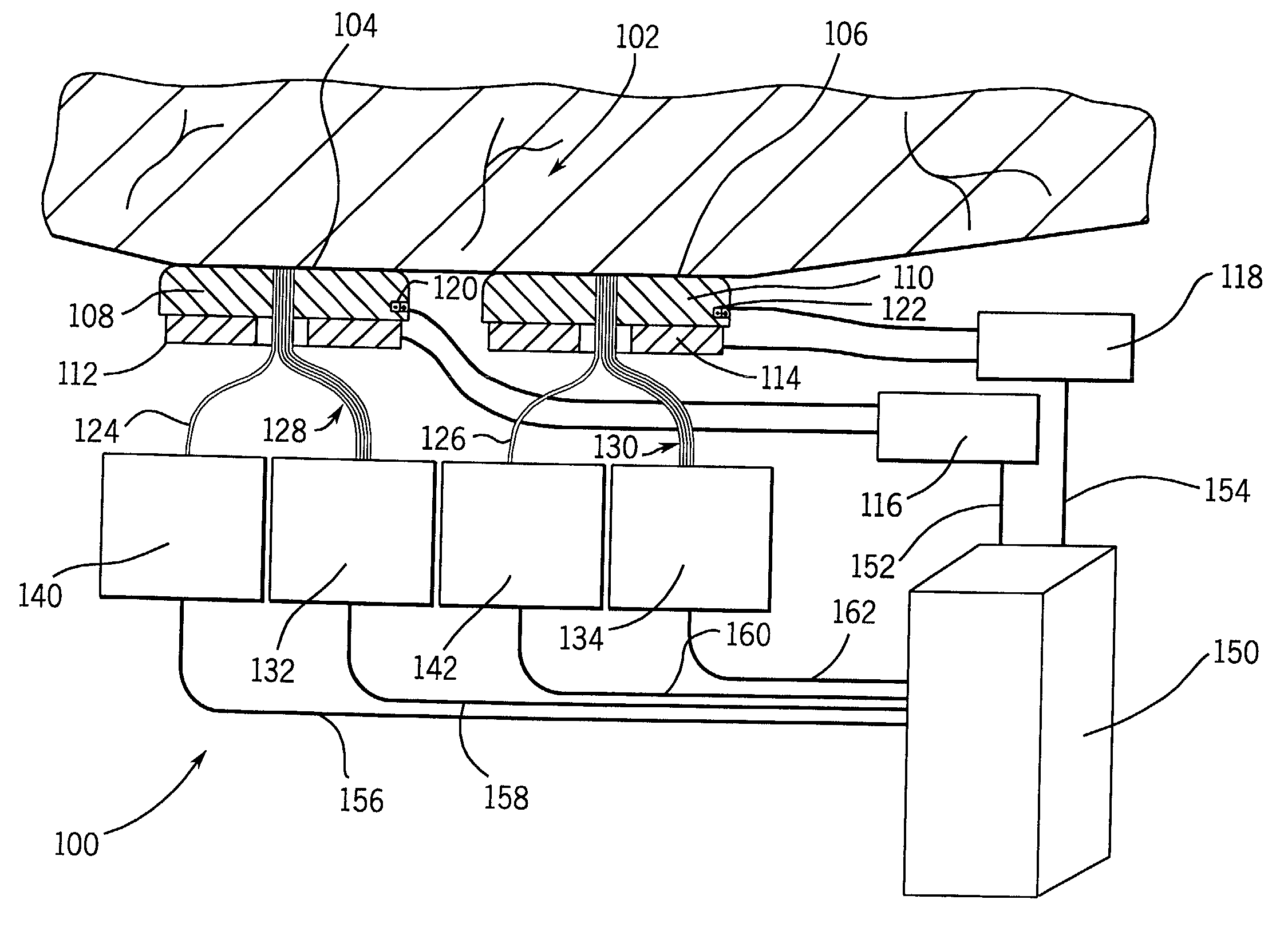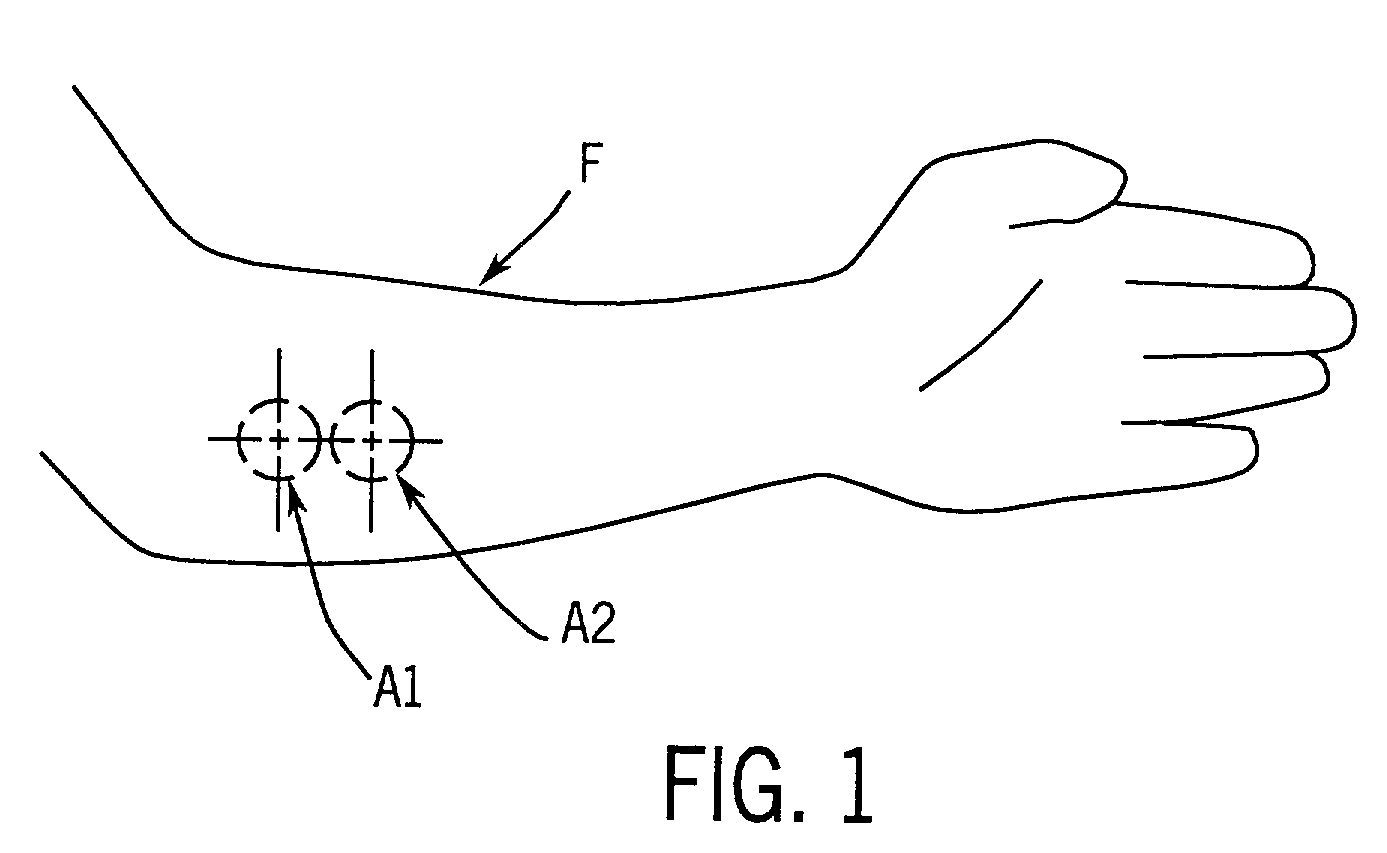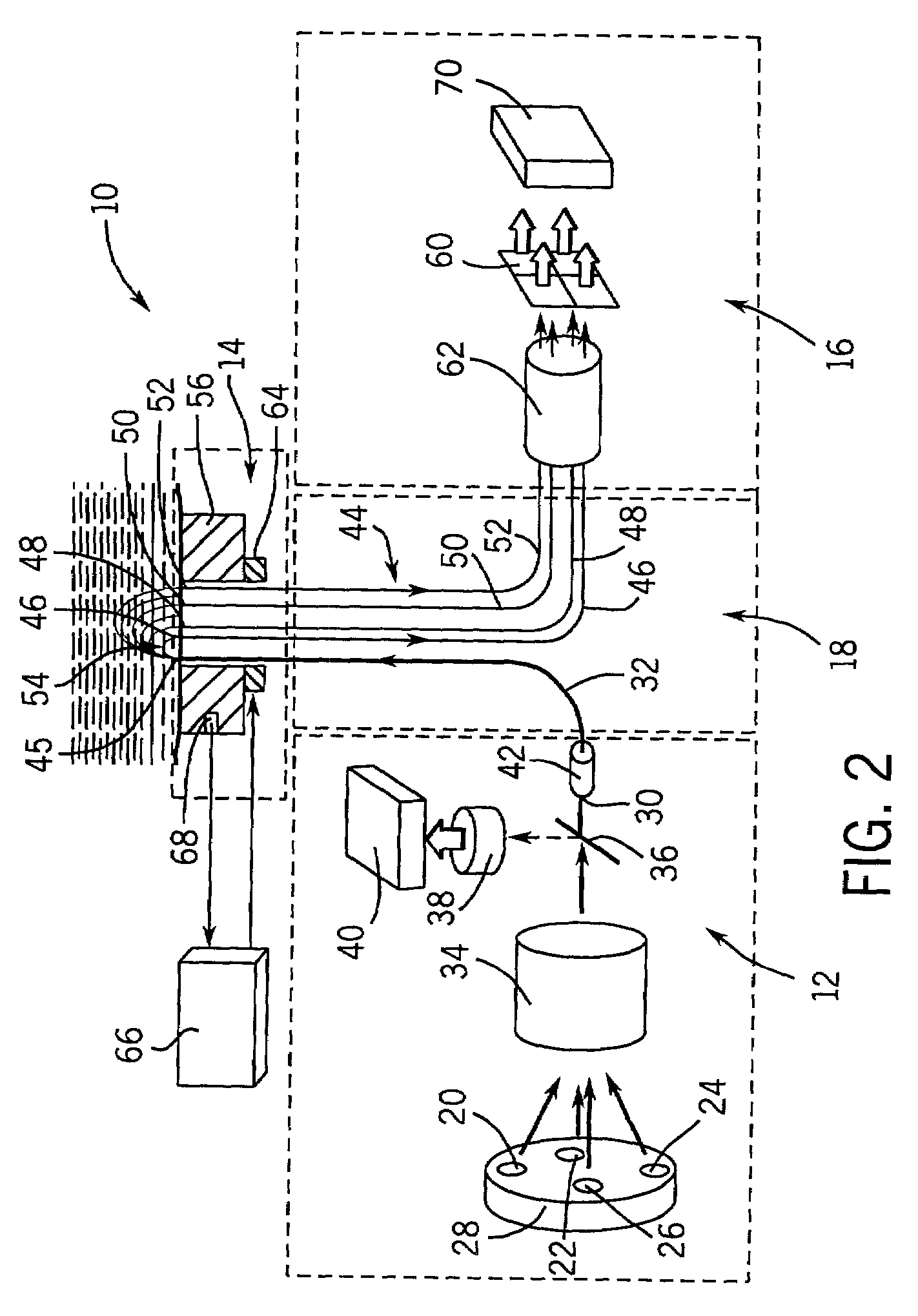Method for optical measurements of tissue to determine disease state or concentration of an analyte
a tissue and optical measurement technology, applied in the field of apparatus and method for noninvasive diagnosis of disease state or noninvasive determination of concentrations of analytes in vivo, can solve the problems of different range, blindness, coma, and ultimately death of patients, and achieve the effect of reducing the risk of blindness, and reducing the number of patients
- Summary
- Abstract
- Description
- Claims
- Application Information
AI Technical Summary
Problems solved by technology
Method used
Image
Examples
example 1
[0108]A device of the type shown in FIG. 2 was constructed. The device was capable of performing optical measurements at a single area on the surface of the skin at a given time. Thus, the device was required to be applied twice to the surface of the skin at two morphologically similar, adjacent, substantially non-overlapping areas on the skin.
[0109]The wavelengths of the LED's and the frequency at which each one was modulated are shown in Table 2.
[0110]
TABLE 2ModulationHalf band widthLED NumberWavelength (nm)frequency (Hz)(nm)16601024 15259081915393558525489045525
[0111]The distance from the center of each light collecting element 46, 48, 50, and 52 to the center of the illuminating element 32 defined the sampling distances r1, r3, r4, and r6 of this device, which are set forth in Table 3.
[0112]
TABLE 3Elementr1r3r4r6Sampling distance (mm)0.440.921.211.84
example 2
[0113]The device described in Example 1 was used in this example. Programmed temperature changes and the optical measurements were carried out at each of the two areas on the surface of the forearm as illustrated in FIG. 1. The body interface module 14 of the device 10 was mounted on a cradle (not shown) that was, in turn, mounted on the left arm of a standard clinical reclining chair (not shown). The subject sat in the chair so that the forearm of the subject rested on the cradle. The head of the optical device, which is located in the body interface module 14, was pressed against the dorsal side of the subject's forearm and the data were collected from the time the head of the optical device contacted the skin. Data were collected at the two area sequentially while each area was subjected to a different temperature program. Data from the two areas were used to create a calibration relationship. At one area of the skin, the temperature was maintained at 34° C. for 30 seconds. The t...
example 3
[0119]The procedure described in Example 2 was repeated in this example. In this example, one area on the surface of the forearm was maintained at a temperature of 38° C. for 30 seconds. The temperature of this area was then lowered to a temperature of 22° C. at the rate of 5.33° C. per minute. Optical readings were collected every five seconds for four minutes. A second area on the surface of the forearm was maintained at a temperature of 22° C. for 30 seconds. The temperature of this area was then raised to 38° C. at the rate of 5.33° C. per minute. Optical readings were collected every five seconds for four minutes.
[0120]The optical data was divided into two classes—the class of diabetics and the class of non-diabetics. A 2×2 table that related the subject's disease status to the optical signal was constructed. The subject's disease status was determined by a reference method wherein the subject had previously been diagnosed as either diabetic or non-diabetic. Four diabetics and ...
PUM
| Property | Measurement | Unit |
|---|---|---|
| wavelength | aaaaa | aaaaa |
| temperatures | aaaaa | aaaaa |
| wavelength | aaaaa | aaaaa |
Abstract
Description
Claims
Application Information
 Login to View More
Login to View More - R&D
- Intellectual Property
- Life Sciences
- Materials
- Tech Scout
- Unparalleled Data Quality
- Higher Quality Content
- 60% Fewer Hallucinations
Browse by: Latest US Patents, China's latest patents, Technical Efficacy Thesaurus, Application Domain, Technology Topic, Popular Technical Reports.
© 2025 PatSnap. All rights reserved.Legal|Privacy policy|Modern Slavery Act Transparency Statement|Sitemap|About US| Contact US: help@patsnap.com



